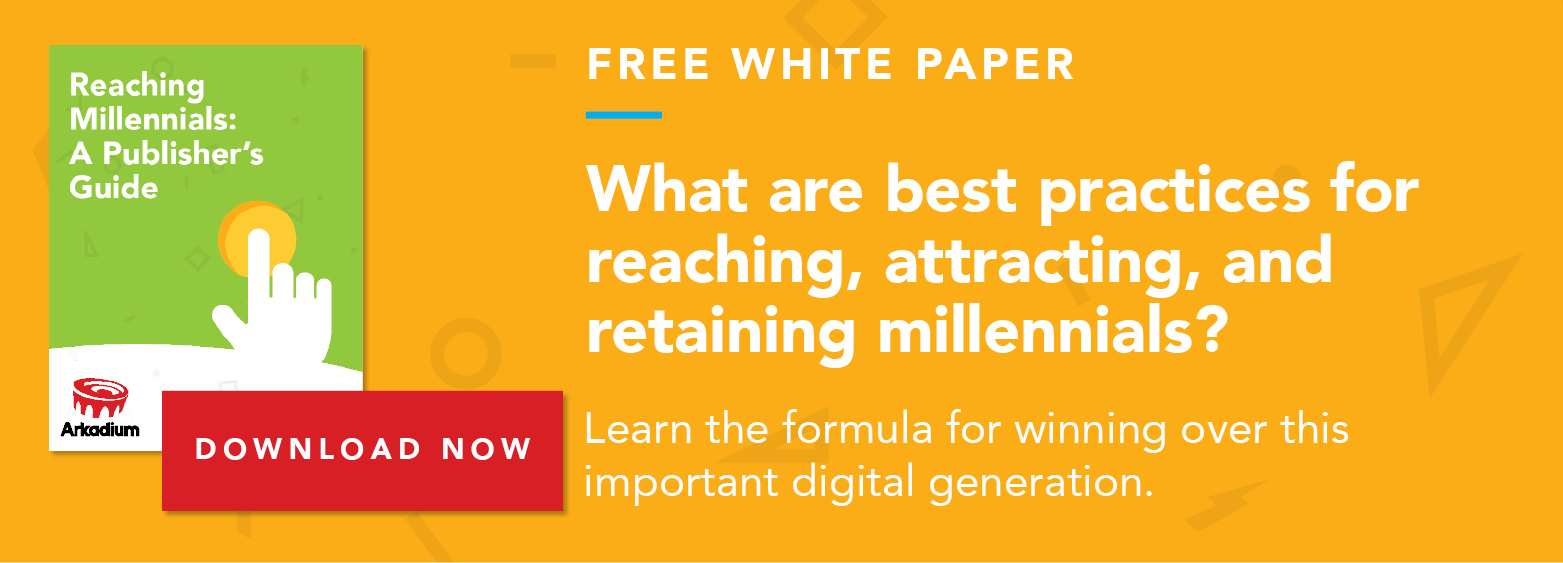Is Cost Per Engagement the Future of Advertising and Publishing?
Source: adotas
By Jess Rovello, CEO, Arkadium
Marketing pioneer John Wanamaker famously said, “Half the money I spend on advertising is wasted; the trouble is I don’t know which half.” Most advertisers will tell you this is still an ongoing issue today.
While marketers are familiar with the concept of cost-per-engagement — or CPE, cost-per-impression or cost-per-click are heavily relied on for understanding campaign success. And while click-through rate is an important aspect of ROI, it’s just one measure of value. If not accurately correlated with other signs of success (time spent, interactivity, brand lift, sales, etc.) and weighted accordingly, focusing on these metrics can cause unintended consequences, like interruptive ad formats, misleading messaging and click bait to drive clicks. All of this ultimately depreciates the overall user experience and does more harm than good. Fundamentally, the most effective advertising is driven by a balanced value exchange, with consumers finding utility through relevance from the content they see. The addition of CPE to brands’ advertising arsenals can help create that.
CPE has plenty of benefits, both to the advertiser and to the end user. Advertisers only pay when someone engages with their ad. Advertisements that value engagement often translates to placements and interactions that can emphasize brand lift in ways that CPC and CPM models don’t. What’s more, you get stronger creativity with CPE since you’re forced to develop richer experiences that resonate with users.
So looking ahead, why is CPE the solution to marketing spend optimization? What are some of its biggest advantages, and how does it fit into the balance? Here’s a closer look.
Metrics matter.
There are many ways a CPE model can improve a marketing campaign. Since these ads are generally placed at ideal locations while urging users to interact through a rich media experience, brand awareness is likely to spike.
CPE delivers a relatively low-risk environment for advertisers. They only need to pay when a user has a meaningful engagement with the branded unit. Similarly, users who choose to engage are already expressing a preliminary interest in the brand. Ad units with high engagement rates are also more likely to have better conversion rates, increasing the value of a potential sales lead.
Considering the above, the ROI for advertisers using CPE is optimal, relative to other models. CPE can provide a better return by improving the quality of acquired users. So most advertisers are comfortable with paying a higher CPE since they know they’re getting a user who’s invested in the product or service. A recent Chartbeat study presents further evidence that engaged audiences are especially valuable. After reviewing 100,000 web pages over a one-week period, the study determined that users are most likely to return if they’re engaged with branded material.
CPE works
The Economist is one publisher leading the CPE charge. The company rolled out its first time-based ad campaign in 2016, billing clients for display impressions that garnered more than five seconds of active reader time. Along with Nielsen, The Economist conducted a study that showed almost an 11 percent lift in brand awareness among users who saw these ads. The typical lift is about 2 percent.
Other publishers have implemented similar strategies emphasizing engagement, focusing on time spent as a key metric to determine engaged users. The Financial Times explored a comparable model based around an innovative “cost per hour” — or CPH — metric. Under traditional CPM buys, however, impressions are all valued equally. So a one-second impression is given the same weight as one that’s 30 seconds. CPH, on the other hand, was developed by research that shows how brand awareness, uplift and association all increase with the amount of time that an ad is in view. This metric only attaches value to impressions that last longer than five seconds while the user engages with the page, providing greater brand impact for every dollar of ad spend.
The Financial Times’ method bares resemblance to a model that viral content publisher Upworthy implemented in 2014. Using “attention minutes” — the measure by which the publisher quantifies time spent — Upworthy values engagement higher than traditional clicks and pageviews. They initially came up with the metric for its editorial team, with the hopes that advertisers would also latch on after seeing the tangible insights that “attention minutes” adds.
Engaging branded possibilities.
The CPE model can also be applied to branded content, which, according to Market Track, is “any form of advertising that uses ‘content’ – typically articles, videos, infographics both on websites and social media – that supports, represents or promotes a product or service.” Looking forward, CPE is where the industry will see the currency for branded content evolve. Buyers will start paying attention to both the quantity and quality of those content views.
In addition to traditional text-based content, premium sports publisher, Bleacher Report showed in 2017 that video content can present branding opportunities. “Game of Zones,” a satirical, animated video series that incorporates the NBA and HBO’s “Game of Thrones,” is sponsored by AT&T. “Gridiron Heights,” a similar series that offers comedic takes on the NFL, was sold to PlayStation. As of November 2017, “Game of Zones” averaged four million views per episode, amounting to more than 70 million total views. “Gridiron Heights” totaled 60 million views before the 2017 NFL season.
The in-article embeds created engaging, topical content for users to manipulate, and resulted in significant metric jumps in key engagement areas: a 100 percent increase in session duration, 3.5 units completed per session and up to 35 percent click-through rates. Each unit carries its own branding opportunity, at scale, leveraging impressive engagement metrics to benefit publishers and advertisers.
As digital publishers and advertisers continue to combat various industry shifts while maintaining audience development, it has become clear that engagement will be one of the keys to success. And a full understanding of CPE can elevate an advertising campaign to the next level.


